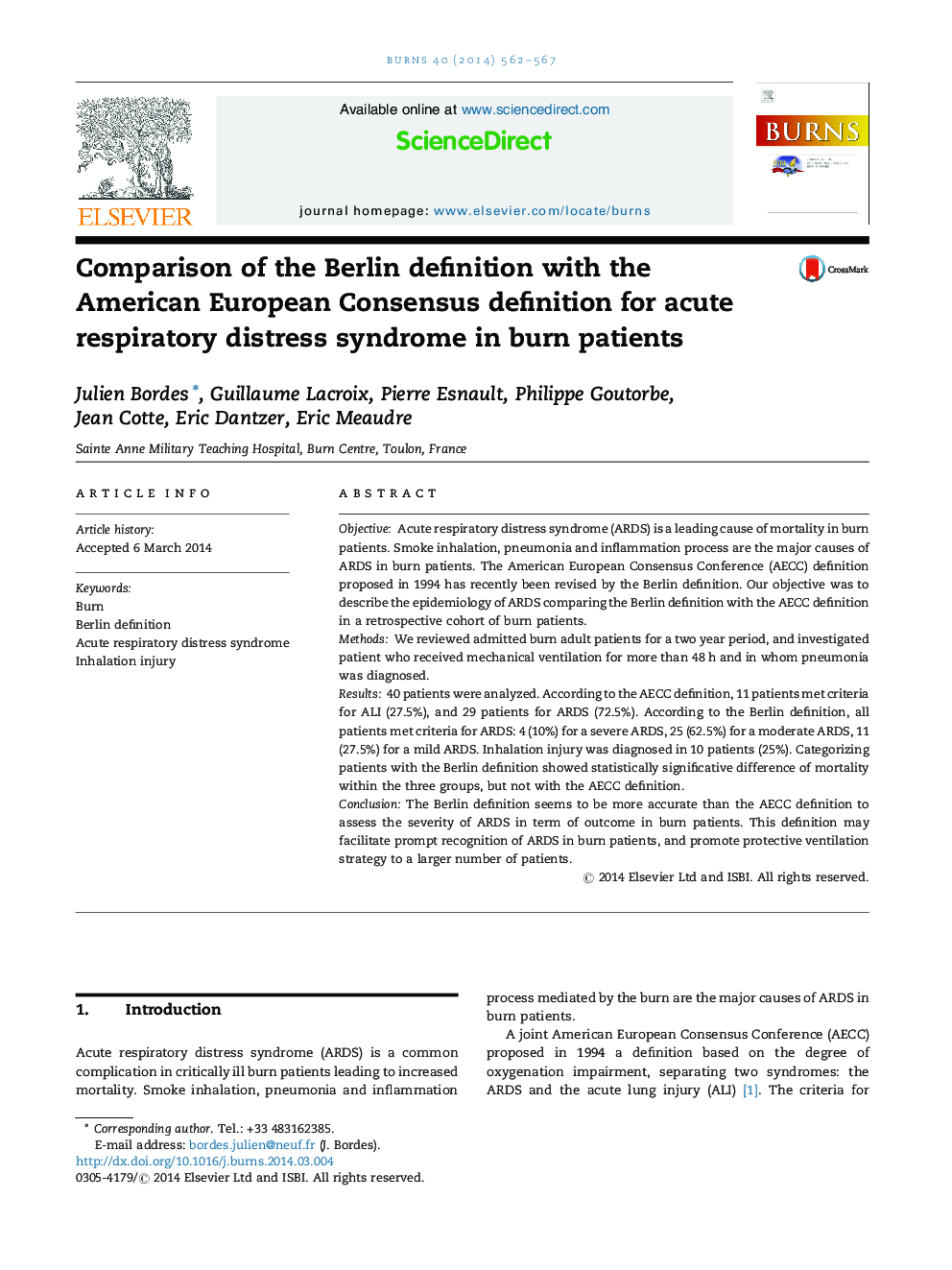| Article ID | Journal | Published Year | Pages | File Type |
|---|---|---|---|---|
| 3104478 | Burns | 2014 | 6 Pages |
ObjectiveAcute respiratory distress syndrome (ARDS) is a leading cause of mortality in burn patients. Smoke inhalation, pneumonia and inflammation process are the major causes of ARDS in burn patients. The American European Consensus Conference (AECC) definition proposed in 1994 has recently been revised by the Berlin definition. Our objective was to describe the epidemiology of ARDS comparing the Berlin definition with the AECC definition in a retrospective cohort of burn patients.MethodsWe reviewed admitted burn adult patients for a two year period, and investigated patient who received mechanical ventilation for more than 48 h and in whom pneumonia was diagnosed.Results40 patients were analyzed. According to the AECC definition, 11 patients met criteria for ALI (27.5%), and 29 patients for ARDS (72.5%). According to the Berlin definition, all patients met criteria for ARDS: 4 (10%) for a severe ARDS, 25 (62.5%) for a moderate ARDS, 11 (27.5%) for a mild ARDS. Inhalation injury was diagnosed in 10 patients (25%). Categorizing patients with the Berlin definition showed statistically significative difference of mortality within the three groups, but not with the AECC definition.ConclusionThe Berlin definition seems to be more accurate than the AECC definition to assess the severity of ARDS in term of outcome in burn patients. This definition may facilitate prompt recognition of ARDS in burn patients, and promote protective ventilation strategy to a larger number of patients.
